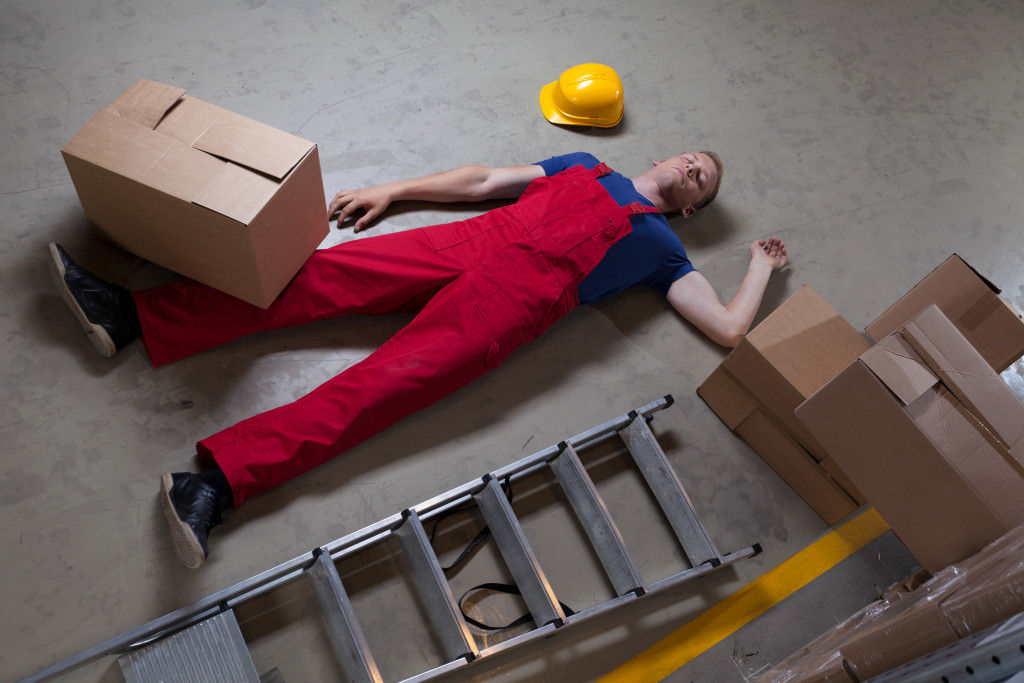- Warehouses are bustling places where employees must be kept safe to increase productivity and morale.
- Common warehouse risks include slips, trips, falls, lifting injuries, and hazardous materials exposure.
- Preventive measures such as safety inspections and audits can help reduce the risk of accidents.
- Employers and managers should create awareness around safety protocols, implement clear rules and regulations, and enforce compliance.
- By following these steps, warehouse workers can feel safe doing their jobs effectively and efficiently.
Warehouses are bustling places filled with people, activity, and heavy machinery. As a warehouse manager, you must ensure your employees feel safe while they work. This is important for legal and moral reasons, but a safe workplace also leads to increased productivity and morale. This blog post will discuss strategies for keeping your warehouse staff safe.
Why Warehouse Safety Is Important
A safe warehouse is more than just a healthy work environment; it’s also essential for the success of any business. A warehouse with unsafe conditions can cause accidents, leading to injuries, lost productivity, and fines from the Occupational Safety and Health Administration (OSHA).
Unsafe working conditions can also hurt employee morale and decrease efficiency due to fear of injury or worse. Finally, unsafe working conditions can increase business insurance costs and potential legal fees if an employee files a lawsuit against their employer for negligence or poor safety practices.
Risks at Warehouses

First of all, it’s essential to understand the common risks associated with working in a warehouse. These include slips, trips, falls, and lifting injuries due to improper lifting techniques or incorrect body positioning during heavy lifting tasks. Heavy machinery like forklifts can also cause injury if they are improperly maintained or misused.
Other risks include exposure to hazardous materials such as chemicals, dust, and fumes; noise-induced hearing damage; musculoskeletal disorders (MSDs); and accidents involving vehicles or other moving objects in the warehouse environment.
What Can Be Done To Keep Employees Safe?
Fortunately, there are steps that employers and managers can take to ensure the safety of their employees in warehouses. These include the following steps:
Preventive Measures
The most important step is to take preventive measures to reduce the risk of accidents and injuries in your warehouse. This involves conducting regular safety inspections and audits, ensuring that all equipment is adequately maintained and operated, providing employees with appropriate protective gear when necessary, and educating them on safe work practices.
In addition, conveyor expert witness testimony can be used to assess conveyor belt safety and risk management to identify any potential hazards. These inspections are often conducted to ensure conveyor belts comply with industry standards and regulations.
Creating an Environment of Awareness
The most important thing you can do as a warehouse manager is to create an environment where safety is top priority. Ensure all new hires know the importance of safety and how it affects their job performance.
Safety should be discussed during new hire orientations and additional training sessions. Additionally, be sure to host regular safety meetings so that everyone on your team is up-to-date on the latest safety protocols and aware of any potential risks in the workspace.
Implementing Rules & Regulations
Once you have created a culture of awareness around safety, it’s time to start implementing rules and regulations that all employees must follow while at work. These rules should cover topics such as proper attire (e.g., no loose clothing or dangling jewelry), use of protective gear (e.g., gloves or hard hats), and appropriate behavior while operating machinery (e.g., no horseplay). It’s also important to post these rules in plain sight throughout the workspace, so everyone knows what is expected of them.
Enforcing Compliance

Once you have established rules for your team to follow, you must enforce those rules consistently. Make sure each employee understands what behavior is expected from them and why following safety protocols is essential for keeping everyone safe on the job site—failure to comply with these rules should result in disciplinary action being taken against those who violate them repeatedly or intentionally put other workers at risk due to their actions. This will help ensure that everyone takes safety seriously and follows protocols accordingly.
The Bottom Line
Warehouse management involves more than just overseeing operations—it also involves ensuring employees’ safety while working in the warehouse environment. By creating an environment of awareness around safety protocols, implementing clear rules and regulations, and enforcing compliance with those rules, you can make sure your employees feel secure while they do their jobs effectively and efficiently!
With these tips in mind, you can rest assured knowing that you are doing everything possible to keep your workers safe while they are on the job site!






